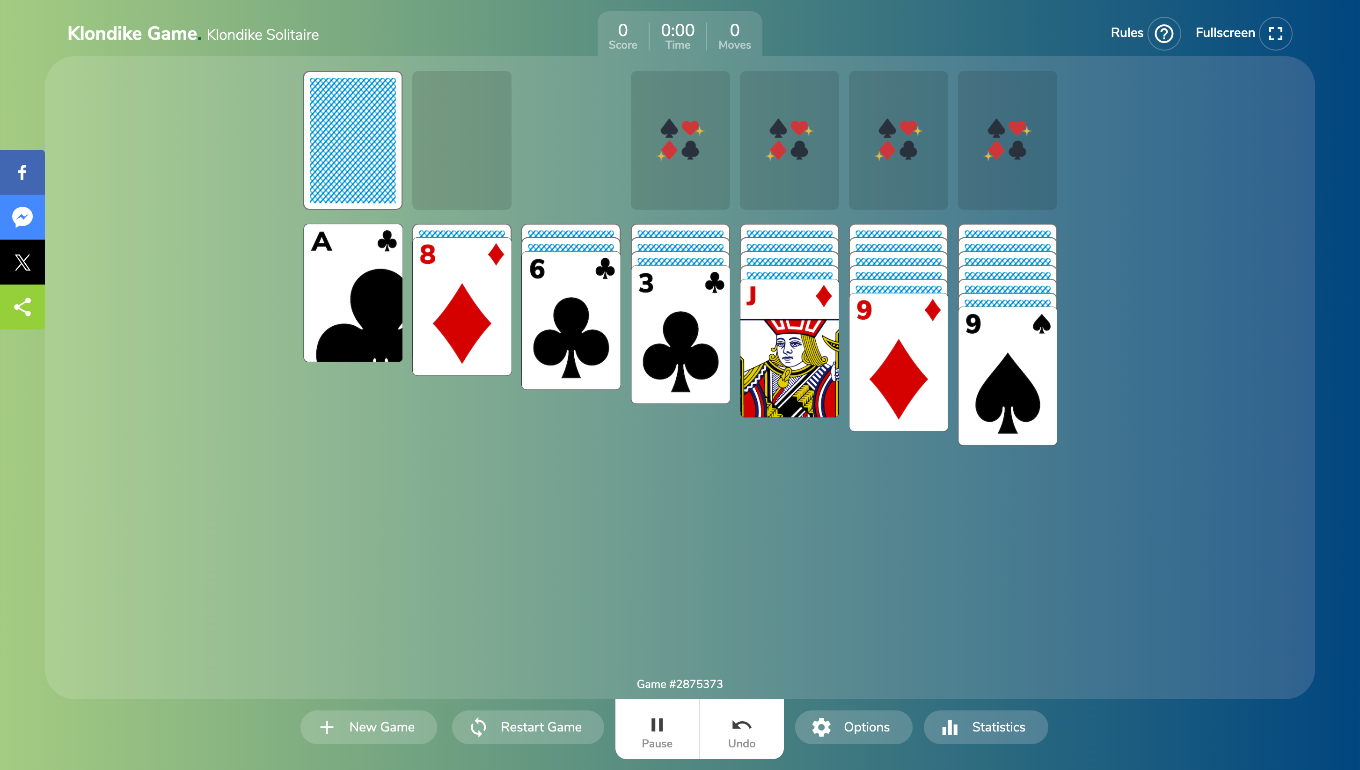KLONDIKE GAME

Frequently Asked Questions
-
Is Klondike Game really free to play?
Yes! Klondike Game is completely free with no hidden costs, subscriptions, or required downloads. Play unlimited games anytime without spending a penny.
-
What's the difference between Turn 1 and Turn 3 Klondike?
In Turn 1 Klondike, you draw one card at a time from the stock pile, making it easier with a 43% win rate. Turn 3 draws three cards at once but only lets you play the top card, creating a more challenging game with an 11% win rate.
-
Do I need to download anything to play Klondike Game?
No download required! Klondike Game runs directly in your web browser. Simply visit our website and start playing instantly on any device – desktop, tablet, or mobile.
-
Can I play Klondike Game on my mobile phone?
Absolutely! Klondike Game is fully optimized for mobile devices. Play on any smartphone or tablet with a responsive design that works perfectly on all screen sizes.
-
Are all Klondike Solitaire games winnable?
Not all Klondike games can be won. In Turn 1 mode, approximately 43% of randomly shuffled games are winnable. Turn 3 mode has about an 11% win rate. The challenge is finding the winning strategy when one exists!
-
What's the best strategy to win Klondike Game?
Key strategies include: always move Aces and 2s to foundations immediately, prioritize revealing face-down cards, focus on clearing the longest tableau columns first, avoid moving cards to foundations too quickly, and think multiple moves ahead before committing.
-
Is Klondike the same as Solitaire?
In the United States and Canada, 'Solitaire' typically refers to Klondike Solitaire specifically, as it's the most popular version. However, Solitaire is actually a broad category of single-player card games, with Klondike being the most well-known variant.
-
Can I undo moves in Klondike Game?
Yes! Our Klondike Game offers unlimited undo functionality. If you make a mistake or want to try a different strategy, simply click the undo button to reverse your moves and explore alternative solutions.

